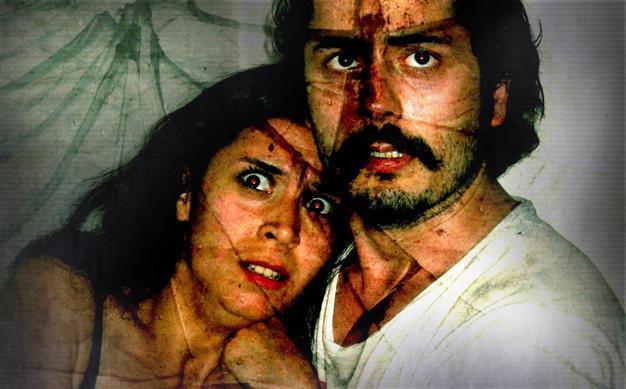Death by technology in film
EMRAH GÜLER ANKARA - Hürriyet Daily News

Fear of technology in movies has found its way into Turkish cinema. “D@bbe” is an apocalyptic tale that cleverly uses Islamic themes, in which the apocalypse is kicked of via the Internet.
Forwarding a private email to your boss could be the ultimate horror story. You might also harbor anxiety over someone tagging you on Facebook. Online shopping can be as scary, if you’ve heard stories of people’s credit cards being hacked. In fact, sometimes computers and emails, TV sets and credit cards can be much scarier than haunted houses, monstrous sharks, and psycho killers -- at least on screen.Two of this week’s new releases play on our anxieties about changing technology and our dependence on it. In director David Brooks’s “ATM,” three friends stop by an ATM booth to withdraw some cash, only to find themselves trapped in the ATM and their lives threatened by a hooded man waiting to kill them. While technology becomes a threat to their lives, it is also technology that offers them the chance of escape, in the form of mobile phones and cameras – which perhaps also let them down, fuelling even more fear of technology.
In Alexandre Courtès’ “The Incident” (released with the title “Asylum Blackout” in some countries), a group of unsuspecting people are stuck in a prison-like building with the criminally insane when a thunderstorm causes a blackout. Something as simple as a malfunction in electricity becomes the source of true horror in this French-American horror movie.
The fear of technology and its reflection in art, more specifically in fiction, is as old as, well, technology.
The first obvious example that comes to mind is Mary Shelley’s “Frankenstein,” or “The Modern Prometheus,” dating back to the early 19th century. An ambitious scientific experiment gone wrong brings a monstrous creature to life. The novel was a pioneer of the science fiction genre, the ultimate inspiration showcasing our fear of advances in science.
The 1927 classic film “Metropolis,” directed by Fritz Lang, known as the “master of darkness,” was one of the first dystopian films to have at its core the theme of fear of technology. Industrial machinery is shown to be fatally dangerous, and is used as a symbol of oppression in a capitalist society.
From factories to the Internet
A similar critique of industrial society and its ill treatment of factory workers can be seen in Charlie Chaplin’s “Modern Times,” of 1936. Here, Chaplin’s iconic Little Tramp character works in an ever-accelerating assembly line, growing increasingly afraid of the enormous machinery. We see the Little Tramp working at a machine at an ever increasing rate, as the work is force-fed down the line by other machinery, eventually leading to his mental breakdown. Many will remember the scenes in which Chaplin tries to find his way over the giant machinery.
The fear of technology took on a whole new look in Hollywood movies of the 1950s. The 1953 movie “The Beast from 20,000 Fathoms” is about a dinosaur that is awakened by an atomic bomb test in the ice of the Arctic Circle. This film started a trend in cinema that would mark the decade as an era of unforgettable monster movies. Films like “The Creature from the Black Lagoon,” “It Came from Beneath the Sea” and “20 Million Miles to Earth” were all about giant creatures as the byproducts of nuclear tests and atomic bombs, displaying what could be called nuclear paranoia.
Technophobia took a new direction after the 1970s, when the focus became the fear of computers and their uncontrolled intelligence. Following some examples that became cult favorites rather than mainstream hits, such as “Colossus: The Forbin Project,” in which a computer decides to dominate the world, the big guns of this genre appeared in the 1980s. “The Terminator” series were about computers becoming self-aware and starting a war against humans.
Ridley Scott’s 1982 science fiction classic “Blade Runner” depicts genetically-engineered humans in a dangerous future. Canadian director David Cronenberg’s 1983 “Videodrome” was one of the first examples to exploit fear of the television, in which a TV set becomes the source of lethal hallucinations and mind control.
Fear of technology in movies has found its way into Turkish cinema as well. Writer and director Hasan Karacadağ’s 2006 film “D@bbe” is an apocalyptic tale that cleverly uses Islamic themes, in which the apocalypse is kicked of via the Internet. Jinns find their way through the Internet, sending emails to the friends of a man who has committed suicide. The Internet has now become the object of our fear of technology. Next, perhaps, it will be social media.
















